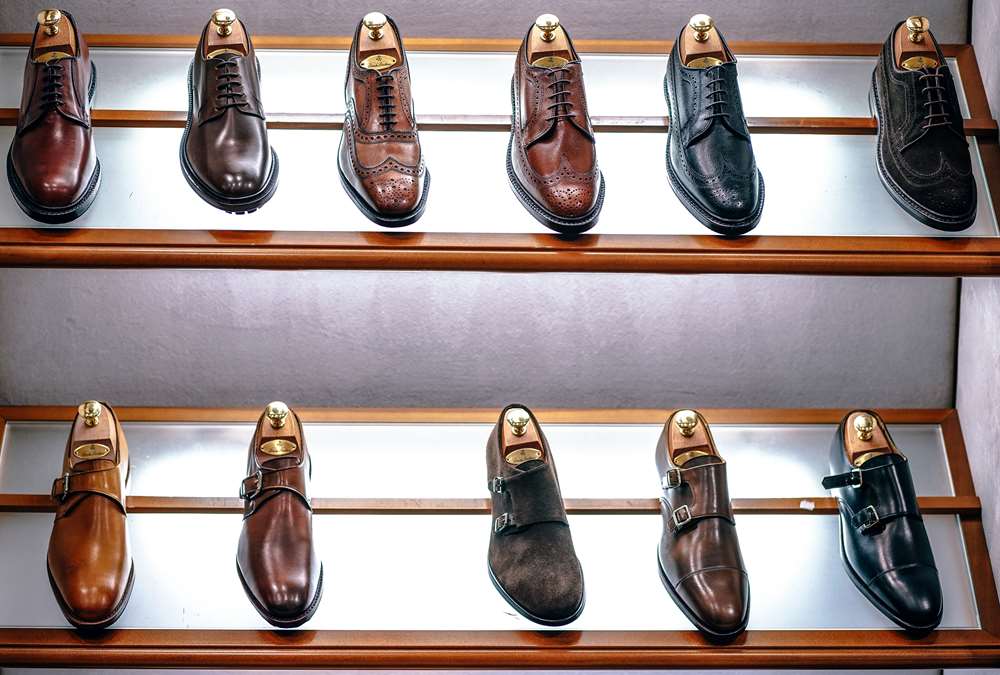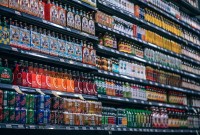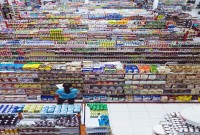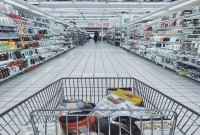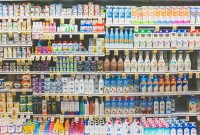- Home
- Business Processes
- Industry Knowledge
- Aerospace Industry
- Automotive Industry
- Banking Domain
- BFSI Industry
- Consumer/ FMCG Industry
- Chemicals Industry
- Engineering & Construction
- Energy Industry
- Education Domain
- Finance Domain
- Hospitality Domain
- Healthcare Industry
- Insurance Domain
- Retail Industry
- Travel and Tourism Domain
- Telecom Industry
- Leadership Skills
- eLearning
- Home
- Industry Knowledge
- Consumer/ FMCG Industry
- Importance of Retail Industry
Importance of Retail Industry
Consumers benefit from retailing as retailers perform marketing functions that make it possible for customers to have access to a broad variety of products and services. Retailing also helps to create a place, time, and possession utilities. A retailer's service also helps to enhance a product's image. Retailing has a tremendous impact on the economy. It involves high annual sales and employment. Learn the importance of the retail industry in this article.
Retail involves the selling of goods to customers. While meeting the needs of customers, the following are some of the functions performed by a retailer:
1. Customer Convenience:
Perhaps the most important role of bringing the ready to be consumed goods to the doorstep of the consumer is performed by the retail community. Consumers benefit from retailing as retailers perform marketing functions that make it possible for customers to have access to a broad variety of products and services. Retailing also helps to create a place, time, and possession utilities. A retailer's service also helps to enhance a product's image. Retailers stock goods and ensure the availability of products and services just when the customer needs them. Convenience Stores operate over extended hours throughout the week and give customers greater flexibility and choice.
2. Accessibility to Products & Services:
Products and services have no value for consumers until they are acquired and used by the customers. Retailers acquire products and services from different places and. assort them at a single point as per the needs of the consumers and thus facilitate customers' access.
3. The convenience of Size:
Retailers breakbulk and serve the products in quantities and sizes as desired by the customer. For example, shampoo is available in small sachets. The retailer helps consumers by providing appropriate products, services, and advice in the packing and quantities desired by them.
4. Providing Associated Services:
A vibrant retail sector benefits the consumers by providing a range of products and services efficiently. Retailing can be done in either fixed locations or online. Retailing includes subordinated services, such as delivery. The term "retailer" is also applied where a service provider services the needs of a large number of individuals, such as a public utility, like electric power. Retailing also helps to increase living standards and enable consumers to possess various goods, services, and utilities.
5. Supply Chain:
Retailers are part of an integrated system called the supply chain. A retailer purchases goods or products in large quantities from manufacturers or directly through a wholesaler, and then sells smaller quantities to the consumer for a profit. Retailers participate in the sorting process by collecting an assortment of goods and services from a wide variety of suppliers and offering them for sale. The width and depth of assortment depend upon the individual retailer's strategy. Retailers provide a vital link between producers and ultimate consumers.
6. Value Chain:
When consumers purchase goods, retailers must order more goods to replenish their stock. In turn, factories must manufacture the goods for retailers. The factories then purchase more raw materials to use to manufacture more goods. This is how consumer spending is able to drive much of the economy.
7. Research & Information:
The retailer provides useful information across the supply chain. He informs and educates customers about product features and benefits. They provide information to consumers through advertising, displays, and signs and sales personnel. Marketing research support is given to other channels, members. Retailing in a way is the final stage in marketing channels for consumer products. He also provides feedback about consumer requirements to the manufacturers and wholesalers which help them in planning production and supply.
8. Mobilizing Finance:
The retailing industry mobilizes the investment and savings of people, as a small shop can be set up with minimal investment. They store merchandise, mark prices on it, place items on the selling floor, and otherwise handle products; usually they pay suppliers for items before selling them to final customers. They complete transactions by using appropriate locations, and timings, credit policies, and other services e.g. delivery. They influence the lifestyle of consumers and help people to build their identity in a social setting.
9. Economic Development:
Retailing has a great impact on the economic development of a nation. Retailing has become an intrinsic part of our daily lives. Consumer spending on retail goods drives much of the global economy, and the retail industry employs a large number of people. Nations that have enjoyed the greatest economic and social progress have a vibrant retail sector. Retailing is one of the most important industries in the world and plays a predominant role in the economic development of the country. Healthy retail sector growth and speeds up economic development.
10. Generating Employment:
There are a large number of people and companies involved in the production, distribution, and retail of goods. Globally, retailing is the largest revenue generator and employment provider next only to agriculture. It provides opportunities to the poorest and unskilled along with the educated and skilled. As a major source of employment retailing offers a wide range of career opportunities including; store management, merchandising and owning a retail business.
11. Social Responsibility:
Successful retailers also recognize that people want to see the improvements in the general level of consumption and social cohesion over time. Retailers have to enhance their perceived value to the community by acting as a focal point and through effective public relations and promotional campaigns including sponsorships. This encourages social responsibility behavior by the corporates where public welfare programs get funded by a certain percentage of purchase prices of the company's products.
(Retailers today can no longer be accurately characterized as intermediaries that buy from suppliers and sell to customers. Today they serve as ecosystems in which value is created and delivered to customers and, subsequently, appropriated by the retailer and its business partners.)
Related Links
You May Also Like
-
Retail Industry - Business Model
A retail business model articulates how a retailer creates value for its customers and appropriates value from the markets. In retail, a business model would dictate the product and/or services offered by the retailer, the pricing policy that he adopts. Many different types of retail establishments exist, and, the overall industry has seen a significant blurring of the boundaries that separated the wide range of retail businesses. Understand the key business models adopted by the retail industry. Understand the distinctive ways that retail industry players use to reach to the end consumer.
-
The retail value chain defines a series of actions that enable businesses to sell their products to customers. Value Chain for any industry describes how an industry is structured and its methods for maximizing revenues. Learn the value chain of the industry. Learn about the key partners, key activities, cost structures, and revenue streams of the retail sector. The value/supply chain analysis reveals the business activities which comprise the movement of retail goods.
-
Retail Industry – Drivers & Dynamics
To succeed in the retail sector, retailers must offer compelling value propositions and be responsive to market dynamics. The continued rise of e-commerce has altered the dynamics of the retail industry in such a way that has forced retailers to drastically reallocate their resources to multi-channel strategies. This article focuses on retail industry drivers and dynamics that provide the reader with a basic understanding of the factors that influence this trade. Understand the business drivers and dynamics of retail industry
-
Retail Industry: Revenue Model
Understand the traditional retail revenue model and, what are the variations in different revenue models adopted by key players in the retail industry. Analyze the pros and cons of various models. The most common and most profitable revenue model is that of the traditional retailer. The traditional retailer profits by selling products and services directly to buyers at a mark-up from the actual cost.
-
From an economic standpoint, there are three main types of consumer goods: durable goods, nondurable goods, and services. For marketing purposes, consumer goods can be grouped into different categories based on consumer behavior, how consumers shop for them, and how frequently consumers shop for them. One of the largest consumer goods groups is called fast-moving consumer goods. This segment includes nondurable goods like food and drinks that move rapidly through the chain from producers to distributors and retailers than on to consumers.
-
Retail Industry Sectors: Types of Retail
A marketplace is a location where goods and services are exchanged. The traditional market square is a city square where traders set up stalls and buyers browse the merchandise. Now retail goods are generally sold in a number of different establishments. Convenience Stores, specialty stores, department stores, supermarkets & hypermarkets, discount stores, multichannel stores are some models used by the retail industry to provide goods to end customers.
-
Retail Industry: Key Performance Metrics
You cannot manage what you do not measure and cannot measure what you do not define. Learn the key performance metrics for the retail industry like Sales per square foot, Gross margins return on investment, Average transaction value, Customer retention, Conversion rate, Foot traffic, and digital traffic and Inventory turnover, etc. These metrics are used across the globe by key industry players to track and improve their performance.
-
Challenges in Consumer Goods Industry
There are tens of thousands of general consumer products manufacturers in the United States. They compete to develop the best products at the most affordable price for the greatest number of consumers. Challenges for these organizations include meeting the changing demands of customers, maneuvering through a consolidating market, and executing strategies to grow profitably.
-
FMCG or consumer packaged goods (CPG) are products that are sold quickly and at relatively low cost, examples include non-durable goods such as soft drinks, toiletries, and grocery items. They generally sell in large quantities, so the cumulative profit on such products can be substantial and these industries often operate on thin margins.
-
Competitive Landscape of Retail Industry
In an increasingly competitive landscape, retail industry players must compete in a number of ways. In this article, we will learn about the competitive landscape of the retail industry. Learn the key players in the retail industry and their business profile. Learn more about the top 5 industry players. Competition is rough, especially for the small business. Knowing how business stacks up to the competition is important to your business strategy.
Explore Our Free Training Articles or
Sign Up to Start With Our eLearning Courses

About Us
Learning
© 2023 TechnoFunc, All Rights Reserved
